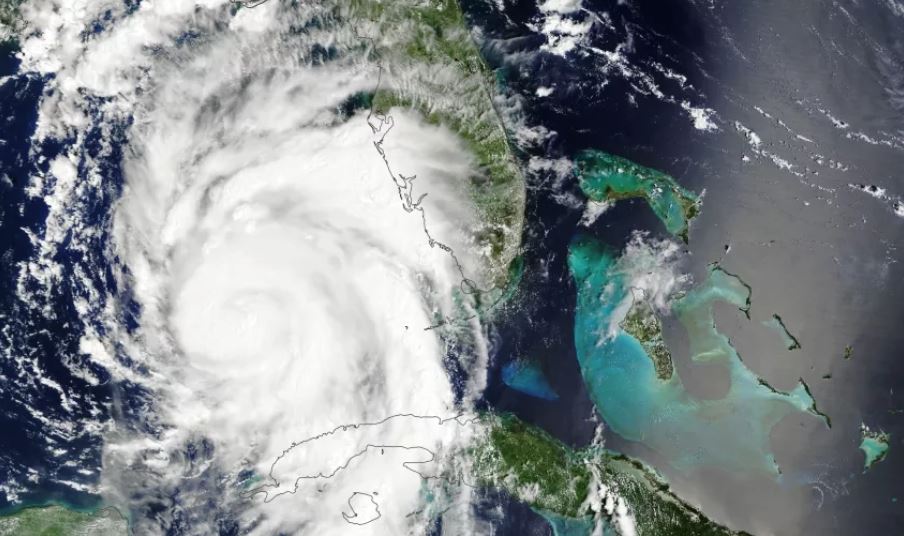In 2023, Joe Biden, who has made combating climate change a key goal of his presidency, let no crisis go to waste when Hurricane Idalia plowed through the Big Bend, Florida, region forcing millions of residents to evacuate.
Joe told White House reporters: “Just look around. Historic floods. I mean, historic floods. More intense droughts, extreme heat, and significant wildfires have caused significant damage.”
Whereas Federal Emergency Management Agency Administrator Deanne Criswell declined to blame that storm on climate change, she nevertheless said her agency was seeing a sharp increase in the number of severe weather events.
While admittedly five years older than President Biden, father time hasn’t entirely erased this writer’s long-term memory, some feverish weather claims most particularly.
Regarding panic on “more frequent and severe” hurricane events, let’s flash back not so terribly far to a U.N. Intergovernmental Panel on Climate Change (IPCC) initiated press conference about two decades earlier following a deadly 2004 Florida storm season which had announced, “Experts warn that global warming [is] likely to continue spurring more outbreaks of intense activity.”
Christopher Landsea, an IPCC researcher and recognized top authority on the subject of cyclones, became astounded and perplexed when he was informed that Kevin Trenberth, a press conference participant and fellow IPCC member, strenuously objected to the alarmist claim.
Since IPCC studies released in 1995 and 2001 had found no evidence of a global warming-hurricane link, and there was no new analysis to suggest otherwise, Landsea wrote to leading IPCC officials imploring: “What scientific, refereed publications substantiate these pronouncements? What studies alluded to have shown a connection between observed warming trends on Earth and long-term trends of cyclone activity?”
Receiving no replies, Dr. Landsea then requested assurance that the 2007 report would present true science, saying: “[Dr. Trenberth] seems to have come to a conclusion that global warming has altered hurricane activity and has already stated so. This does not reflect consensus within the hurricane research community.”
After that assurance didn’t come, Landsea, an invited author, resigned from the 2007 IPCC report activity and issued an open letter presenting his reasons.
With no intent to make light of the foreboding trauma hurricanes and large tropical storms cause to those in their path — after all, this writer resides in Houston — let’s nevertheless recognize that they are hardly rare or becoming more frequent occurrences throughout U.S. history.
Notwithstanding lamentable damage estimated between $2.5 billion-$3 billion, last year, in fact, was a relatively sparse season.
Cat 3 Idalia constituted the only U.S. landfalling 2013 hurricane, with two other cyclones — Harold and Ophelia — arriving as tropical storms.
For a larger historical perspective, consider that North Atlantic tropical storm and hurricane patterns fail to reveal any worsening trend over more than a century.
Cat 3-4 Hurricane/Tropical Storm Harvey and Cat 4 Hurricane Irma back in 2017 ended an almost 12-year drought of U.S. landfall Cat 3-5 hurricanes since Wilma in 2005, whereas 14 even stronger Cat 4-5 monsters occurred between 1926 and 1969.
Many intense Atlantic storms formed between 1870 and 1899, 19 in the 1887 season alone, but then became infrequent again between 1900 and 1925. The number of destructive hurricanes ramped up between 1926 and 1960, including many major New England events.
As for more recent hurricanes, the 2005 and 1961 seasons shared records for their seven major U.S. landfalls since 1946, whereas 1983 previously set the 2023 record for the least number, with only one.
Twenty-one Atlantic tropical storms formed in 1933 alone, a record only most recently exceeded in 2005, which saw 28 storms.
Tropical storms can produce devastatingly destructive rainfall: Amelia dumped 48 inches on Texas in 1978; Claudette inundated Alvin, Texas, with 54 inches in 1979, emptying 43 inches in just 24 hours; and Hurricane Easy deluged Florida with 45.2 inches in 1950.
In terms of U.S. fatalities, “Superstorm Sandy” in 2012, which ravaged the northern East Coast, resulted in more than 100 deaths; the San Felipe Segundo hurricane, which struck Florida in 1928, produced an estimated 2,500 casualties; and the Galveston hurricane of August 29, 1900, may have killed up to 12,000 people.
More recently, Katrina had reached a Cat 5 hurricane level, packing 175 mph wind speeds with a 20-foot storm surge in 2005 before hitting the Louisiana coast as a tropical storm, which resulted in about 1,800 deaths.
So no, there’s nothing new about enormous risks to lives and property resulting from extreme weather, circumstances that increase as populations concentrate in coastal areas.
Nevertheless, we’ve all heard it before: always some event providing more evidence that climate change is our greatest existential threat… and according to IPCC, America is causing it through excess prosperity.
The Biden administration’s solution is, therefore, to “transition” from fossil sources that supply more than 80% of U.S. and global energy to intermittent sunbeams and windy breezes that provide a total of about 3% along with hundreds of billions of dollars in tax credits to promote electric vehicles.
Never mind that all of this depends upon rare earth minerals mined by slave and child labor in China and the Congo, which is prohibited here because it pollutes the environment.
Perhaps someone should remind old Joe that whereas not “climate pollution,” unfiltered particulate emissions released from an estimated new coal plant weekly in China are the severe climate of reality we should all truly worry about.
This article originally appeared at NEWSMAX
